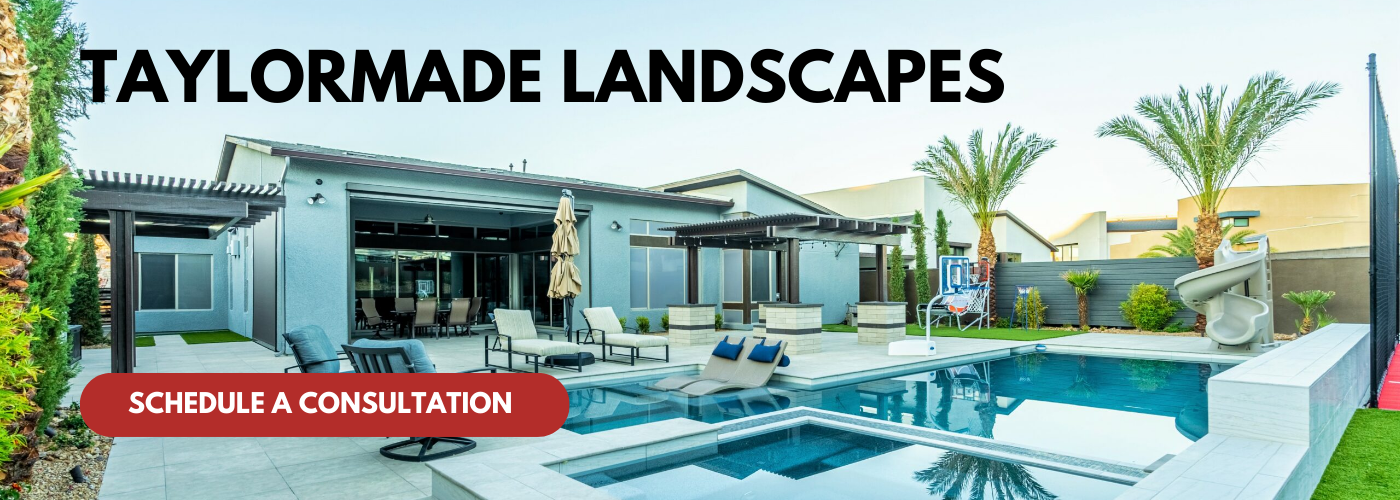As we step into 2025, the importance of creating family-friendly outdoor spaces has never been more significant. With an increasing number of families seeking to connect with nature while enjoying the comforts of home, hardscaping has emerged as a crucial component in designing welcoming and functional landscapes. Hardscape features encompass a variety of non-plant elements, such as patios, pathways, retaining walls, and outdoor kitchens, which not only enhance the aesthetic appeal of a property but also serve practical purposes that cater to the diverse needs of a family environment.
In today’s fast-paced world, outdoor spaces must accommodate different activities for people of all ages. As families strive to foster connections with their loved ones and develop healthy lifestyles, the right hardscape features can transform a simple backyard into a multi-functional oasis. Innovative materials and design trends that promote safety, accessibility, sustainability, and comfort are at the forefront of landscape planning for families in 2025. From durable surfaces that facilitate play to versatile seating areas that invite relaxation, understanding these elements is essential for creating an outdoor environment that nurtures family interaction and enjoyment.
The exploration of ideal hardscape features for family-friendly landscapes requires a keen examination of current trends, technological advancements, and the changing dynamics of family life. By incorporating resilient materials, sensory experiences, and adaptive designs, homeowners can curate spaces that are not only visually appealing but also practical for everyday use. In this article, we will delve into the most effective hardscape solutions for family-friendly landscapes, emphasizing how thoughtful design can foster connection, create lasting memories, and ensure that outdoor areas serve as an extension of the home. As we look forward to the future of our outdoor living spaces, the ideal hardscapes will ultimately reflect the values of safety, inclusivity, and communal well-being that families cherish today.
Sustainable Materials and Eco-Friendly Hardscapes
As we step into 2025, the emphasis on sustainability continues to dominate landscape design, particularly when it comes to hardscapes. Sustainable materials and eco-friendly hardscapes are essential components in creating family-friendly landscapes that are both visually appealing and environmentally responsible. Hardscapes, which include elements like patios, walkways, retaining walls, and decorative features, should utilize materials that minimize environmental impact while enhancing the overall functionality and aesthetic of outdoor spaces.
To create an inviting family-friendly landscape, using materials such as recycled concrete, repurposed brick, and sustainably sourced wood is becoming increasingly popular. These materials not only reduce waste but also add character and warmth to outdoor areas. Additionally, permeable paving solutions that allow water to seep through rather than pooling on surfaces can help manage stormwater, reduce runoff, and mitigate flooding, creating a safer outdoor environment for children and pets to enjoy.
Another aspect of eco-friendly hardscapes is their contribution to biodiversity. Incorporating features like green walls, living roofs, or planters that blend with native plantings not only improves air quality but also fosters a habitat for local wildlife. This approach not only makes landscapes more beautiful but also educates families about the importance of preserving local ecosystems. Along with aesthetic and environmental benefits, the durability of these sustainable materials often ensures lower long-term maintenance costs, making them a sensible investment for families looking to create a resilient outdoor living space.
In 2025, family-friendly landscapes will increasingly prioritize sustainability, with an expectation that hardscape elements are not just functional but also contribute positively to the health of our planet. This shift indicates a growing awareness and commitment towards a more sustainable future, allowing families to enjoy their outdoor spaces in a manner that is both responsible and enriching.
Multi-Functional Spaces for Play and Relaxation
In 2025, the design of family-friendly landscapes is increasingly leaning towards multi-functional outdoor spaces that cater to both play and relaxation. This trend recognizes the need for versatility in outdoor areas, allowing families to enjoy various activities within a single environment. The integration of hardscape features that can adapt to different uses not only optimizes space but also fosters family bonding and outdoor leisure.
One crucial element of multi-functional spaces is the creation of zones that can be easily transitioned between play areas for children and serene spots for relaxation or social gatherings. For instance, incorporating materials like composite decking or permeable pavers means that these zones can accommodate both high-energy activities, such as playsets or trampoline areas, and quieter spaces, like patios with comfortable furniture and fire pits. This flexibility allows families to host gatherings while also providing a safe environment for kids to engage in playful pursuits.
Additionally, incorporating elements like modular furniture and movable outdoor equipment enhances the functionality of these spaces. Families can adjust the layout based on their needs—creating an open area for games, or setting up an intimate setting for evening relaxation under the stars. Another innovative approach is the integration of built-in seating around play areas. This not only offers a direct view for parents to supervise their children but also creates a cozy atmosphere for family gatherings. Such thoughtful design encourages families to spend more time outdoors, ensuring that both play and relaxation can coexist harmoniously.
Moreover, the concept of incorporating natural elements alongside hardscapes continues to be popular. For example, using raised planters or vertical gardens not only adds aesthetic value but also promotes eco-friendliness and a connection to nature. These elements enrich the environment and can serve educational purposes for children who are learning about gardening and environmental stewardship. By integrating these functional hardscape designs with greenery, landscapes become more than just a backdrop; they transform into a lively extension of the family home that fosters interaction, creativity, and well-being.
Safety Features and Non-Slip Surfaces
When designing family-friendly landscapes, safety is a paramount concern, particularly in 2025 when more families are seeking outdoor spaces that allow for active play while keeping children safe. Safety features in hardscaping can encompass various elements that reduce risks associated with slips, trips, and falls. One of the critical components to consider is the incorporation of non-slip surfaces. These surfaces are essential for areas such as walkways, patios, and play zones, where kids often run and play. Textured materials or finishes that provide additional grip can dramatically reduce the likelihood of accidents.
In addition to non-slip surfaces, safety features also include well-planned transitions between different hardscape elements. For instance, using gradual slopes instead of abrupt changes in elevation can help prevent falls. Moreover, ensuring that all hardscape components are well-lit enhances visibility during evening hours, further reducing accident risks. The use of rounded edges on paths and seating areas can eliminate sharp corners that pose a danger to children playing nearby. By integrating these safety measures into the landscape, families can enjoy an outdoor environment that is both beautiful and secure.
Moreover, incorporating safety features into outdoor spaces aligns with the growing trend of creating environments that promote active lifestyles while nurturing children’s creativity and imagination. In 2025, we can anticipate more designs focusing on inclusive play areas that blend seamlessly with the hardscape, allowing for creative play while ensuring safety. For instance, incorporating soft landscaping alongside hardscaping elements like boulders or retaining walls provides children with safe creative climbing opportunities without sacrificing the aesthetic appeal of the space.
Ultimately, prioritizing safety features and non-slip surfaces in hardscape design not only boosts the functionality of family-friendly landscapes but also showcases the importance of thoughtful planning. As society places a greater emphasis on outdoor living spaces that cater to families, the demand for environments that offer security, aesthetic value, and versatility will continue to rise. Well-designed hardscapes will become synonymous with family-friendly landscapes in the future, ensuring peace of mind while families enjoy their outdoor spaces.
Integration of Smart Technology
The integration of smart technology into family-friendly landscapes is quickly becoming a prominent trend for 2025, as it enhances convenience, safety, and the overall experience in outdoor spaces. Smart technology comprises various innovative features that not only streamline maintenance but also cater to the specific needs of families. These advancements range from automated irrigation systems to advanced lighting setups that adjust based on the time of day or occupancy. Additionally, smart outdoor appliances can be controlled remotely, providing functionality that not only conserves resources but also makes family life more enjoyable.
One of the most appealing aspects of smart technology in landscaping is its ability to integrate seamlessly with existing outdoor features. For instance, smart lighting systems can illuminate pathways, patios, and play areas, ensuring that children can play safely even after dark. Moreover, the convenience of programmable watering systems means families can maintain lush greenery without the constant worry of over-watering or under-watering their gardens. This feature not only promotes sustainability—a growing priority in design—but also reduces the physical demands of garden upkeep, making landscapes more accessible for families with varying levels of gardening prowess.
Families can also enjoy enhanced outdoor security through smart technology. Features such as motion-sensor lighting, surveillance cameras, and even smart locks on outdoor gates provide peace of mind without compromising the overall aesthetic of the landscape. This integration ensures that the yard remains a safe haven for children and pets to explore and play freely. As home automation technology continues to progress, families are likely to increasingly prioritize these features, looking for ways to integrate them into their outdoor spaces for improved security, sustainability, and overall liveability.
Furthermore, the integration of smart technology also enables families to create more personalized outdoor experiences. For instance, with outdoor smart speakers, families can curate their outdoor ambiance with music or podcasts, fostering a vibrant atmosphere for gatherings or quiet evenings spent outdoors. Smart thermostats combined with outdoor heating elements can extend the usability of patios and outdoor living rooms into cooler months—an ideal setup for family bonding time, regardless of the season.
Overall, the incorporation of smart technology in hardscape features of family-friendly landscapes is expected to be a defining characteristic in 2025. It not only adds a layer of convenience and safety, but it also allows for richer, more responsive outdoor experiences that cater to the dynamic needs of modern families.
Low-Maintenance Hardscape Options
As families increasingly turn their outdoor spaces into extensions of their homes, the demand for low-maintenance hardscape options has risen dramatically. In 2025, this trend reflects a growing desire for landscapes that not only foster relaxation and play but also require minimal upkeep. Busy families appreciate solutions that allow them to spend quality time outdoors without the incessant chores that traditional gardens can impose. Low-maintenance hardscape features, such as permeable pavers, stamped concrete, and gravel paths, are gaining popularity because they not only save time but also contribute to environmental sustainability.
Permeable pavers, for instance, offer an efficient way to manage stormwater runoff while providing an attractive walking surface. These paving systems allow water to seep through the gaps between the stones, reducing the need for additional drainage solutions and preventing puddles from forming after rain. Likewise, stamped concrete adds beauty to a space while requiring little upkeep compared to natural stone or brick. Its durability means fewer repairs and a longer lifespan, and it can be designed to mimic other materials while maintaining a smooth, consistent surface.
Another appealing low-maintenance hardscape option is the use of synthetic turf. With advancements in technology, today’s artificial grass not only looks remarkably realistic but also eliminates the need for constant mowing, watering, and fertilizing. This eco-friendly alternative provides a soft and safe play surface for children and pets alike, making it an excellent choice for families. Additionally, incorporating well-placed gravel beds or rock gardens can reduce the amount of grass and traditional landscaping that needs constant care, further enhancing the family-friendly aspect of these outdoor spaces.
In summary, low-maintenance hardscape options are fundamental to creating a family-friendly landscape in 2025. They allow families to enjoy their outdoor environments without the burden of extensive maintenance, facilitating more time spent together outdoors. As the trends evolve, integrating these innovative features will not only enrich family life but also promote responsible environmental stewardship.



